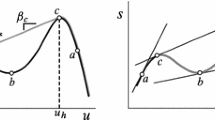Abstract
A new ensemble interpretation of quantum mechanics is proposed according to which the ensemble associated to a quantum state really exists: it is the ensemble of all the systems in the same quantum state in the universe. Individual systems within the ensemble have microscopic states, described by beables. The probabilities of quantum theory turn out to be just ordinary relative frequencies probabilities in these ensembles. Laws for the evolution of the beables of individual systems are given such that their ensemble relative frequencies evolve in a way that reproduces the predictions of quantum mechanics.
These laws are highly non-local and involve a new kind of interaction between the members of an ensemble that define a quantum state. These include a stochastic process by which individual systems copy the beables of other systems in the ensembles of which they are a member. The probabilities for these copy processes do not depend on where the systems are in space, but do depend on the distribution of beables in the ensemble.
Macroscopic systems then are distinguished by being large and complex enough that they have no copies in the universe. They then cannot evolve by the copy law, and hence do not evolve stochastically according to quantum dynamics. This implies novel departures from quantum mechanics for systems in quantum states that can be expected to have few copies in the universe. At the same time, we are able to argue that the center of masses of large macroscopic systems do satisfy Newton’s laws.
Similar content being viewed by others
Notes
Thanks to Antony Valentini for suggesting this was the case.
I refrain from exploring some obvious science fiction conjectures about this.
References
de Broglie, L.: Solvay Conference, Electrons et Photons: Rapports et Discussions du Cinquieme Conseil de Physique tenu a Bruxelles du 24 au 29 Octobre 1927 sous les auspices de l’Institut International Physique Solvay (1928)
Bacciagaluppi, G., Valentini, A.: Quantum Theory at the Crossroads: Reconsidering the 1927 Solvay Conference. Cambridge University Press, Cambridge (2009)
Bohm, D.: A suggested interpretation of quantum theory in terms of hidden variables, I. Phys. Rev. 85, 166–179 (1952)
Vink, J.C.: Quantum mechanics in terms of discrete beables. Phys. Rev. A 48, 1808 (1993)
Nelson, E.: Derivation of the Schrödinger equation from Newtonian mechanics. Phys. Rev. 150, 1079 (1969)
Nelson, E.: Quantum Fluctuations. Princeton Series in Physics. Princeton University Press, Princeton (1985)
Smolin, L.: Could quantum mechanics be an approximation to another theory? quant-ph/0609109
Pusey, M.F., Barrett, J., Rudolph, T.: The quantum state cannot be interpreted statistically. arXiv:1111.3328
Gomes, H., Gryb, S., Koslowski, T.: Einstein gravity as a 3D conformally invariant theory. Class. Quantum Gravity 28, 045005 (2011). arXiv:1010.2481
Barbour, J., Ó Murchadha, N.: Conformal superspace: the configuration space of general relativity. arXiv:1009.3559
Valentini, A.: Signal-locality in hidden-variables theories. Phys. Lett. A 297, 273–278 (2002). arXiv:quant-ph/0106098
Unger, R.M., Smolin, L.: Do the Laws of Nature Evolve? Book manuscript in preparation
Einstein, A.: Grundzüge der Relativitatstheorie. Vieweg, Braunschweig (1990). Originally Vier Vorlesungen über Relativitatstheorie, 1922; the talks were given in 1921
Afriat, A., Caccese, E.: The relativity of inertia and reality of nothing. philsci-archive.pitt.edu/4450/1/Inertia.pdf., p. 8, from which the quote in the footnote was taken
Wallstrom, T.C.: Inequivalence between the Schrödinger equation and the Madelung hydrodynamic equations. Phys. Rev. A 49, 1613–1617 (1994)
Greene, B.: The Hidden Reality. Knopf, New York (2011)
Acknowledgements
I am grateful to Julian Barbour, Saint Clair Cemin, Miriam Diamond, Cohl Furey, Elizabeth Gould, Lucien Hardy, Adrian Kent, Jaron Lanier, Michael Neilsen, Carlo Rovelli, Rob Spekkens and Antony Valentini for comments, suggestions on drafts of this paper, and encouragement. I would like to thank also Antony Valentini for the chance to present this work at the New Frontiers in Quantum Foundations, CUPI 2011 conference and Gerhard Grossing for the invitation to present it at the Heinz von Foerster Conference on Emergent Quantum Mechanics. I am similarly grateful to the Templeton Foundation for the opportunity to present this work at the Meeting for the “Quantum Physics and the Nature of Reality” program held from July 3–7, 2011 at the International Academy Traunkirchen (IAT), Austria. I am very grateful to the participants at these conferences for valuable comments.
I would also like to thank the two referees for very useful and perceptive comments which have greatly improved the manuscript.
This direction of thought was inspired by work in progress with Roberto Mangabeira Unger on the implications of the hypothesis that there is only one universe which must be explanatorily closed [12]. Research at Perimeter Institute for Theoretical Physics is supported in part by the Government of Canada through NSERC and by the Province of Ontario through MRI. My research on quantum foundations is also supported by grants from the Templeton Foundation and FQXi.
Author information
Authors and Affiliations
Corresponding author
Rights and permissions
About this article
Cite this article
Smolin, L. A Real Ensemble Interpretation of Quantum Mechanics. Found Phys 42, 1239–1261 (2012). https://doi.org/10.1007/s10701-012-9666-4
Received:
Accepted:
Published:
Issue Date:
DOI: https://doi.org/10.1007/s10701-012-9666-4



